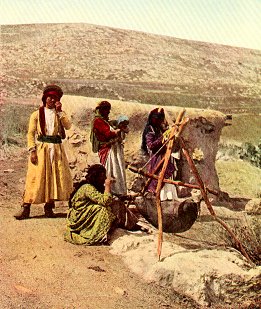Butter
|
|
Butterballs.jpg
Butter is a dairy product made by churning fresh cream. It consists of an emulsion of water and milk proteins in a matrix of fat, with over 80% being fat. It is used as a condiment and for cooking in much the same ways as vegetable oils or lard.
It is solid but soft at room temperature, and melts easily. Its color is generally pale yellow, but can vary from deep yellow to nearly white (butter is typically paler, for example, when dairy cattle feed on stored hay rather than fresh grass in the winter). In countries where cows are fed on pasture year-round (grass fed beef) butter does not change colour much.
Butter sold in United States markets is typically salted. Visitors from Europe should know that anything labeled "butter" in the U.S. is salted unless specified otherwise. Flavorings, colorings, and preservatives may also be added. New Zealand produces a butter with cold-spreadability properties that make it suitable for a spread on soft foods such as bread.
Butter is sometimes rendered to produce clarified butter or ghee.
Often the term "butter" is used in the names of products made from pureed nuts or peanuts, especially peanut butter. However, the term "butter" alone, without any additional qualifying word, always refers to the dairy product.
| Contents |
History
Butter has at various times been used as a food, a cosmetic, and a medicine. In antiquity, the process was simply to let a pan of milk sit until the cream floated to the top; the cream could then be skimmed off. The cream was allowed to sour (lactose converted to lactic acid by means of natural bacteria) and "set" (thicken) into a form called "clabber cream". Various techniques were then used to shake up this clabber cream in order to separate the cream from the emulsifier lecithin, which would ordinarily prevent it from solidifying. The liquid (buttermilk) and the solid unemulsified fat (butter) can then be separated. Butter made in this fashion is now sold as "cultured butter", as distinguished from the more common "sweet butter" or "sweet cream butter" which is made from unfermented milk.
An ancient traditional method of butter making is shown in the photo at right, taken in Palestine in the early 1910s. A goat skin is half filled with milk, then inflated with air and sealed. It is hung with ropes on a tripod of sticks and rocked to and fro until the butter is formed.
Butter1web.jpg
The process of shaking up the cream to make butter is known as "churning", and various forms of butter churn have been used for the purpose. In Europe from the Renaissance until the Industrial Revolution, this was generally as simple as a barrel on rockers, which was rocked by hand. Afterward, mechanical means of churning were usually substituted.
The Household Cyclopedia of 1881 instructs:
"Let the cream be at the temperature of 55° to 60°, by a Fahrenheit thermometer; this is very important. If the weather be cold put boiling water into the churn for half an hour before you want to use it; when that is poured off strain in the cream through a butter cloth. When the butter is coming, which is easily ascertained by the sound, take off the lid, and with a small, flat board scrape down the sides of the churn, and do the same to the lid: this prevents waste. When the butter is come the butter-milk is to be poured off and spring water put into the churn, and turned for two or three minutes; this is to be then poured away and fresh added, and again the handle turned for a minute or two. Should there be the least milkiness when this is poured from the churn, more must be put in.
"The butter is then to be placed on a board or marble slab and salted to taste; then with a cream cloth, wrung out in spring water, press all the moisture from it. When dry and firm make it up into rolls with flat boards. The whole process should be completed in three-quarters of an hour. In hot weather pains must be taken to keep the cream from reaching too high a heat. If the dairy be not cool enough, keep the cream-pot in the coldest water you can get; make the butter early in the morning, and place cold water in the churn for a while before it is used."
Nutrition information
NutritionFacts_butter.png
Trivia
The German expression alles ist in Butter ("Everything is in butter") means everything is in order. In the Middle ages, fragile articles were transported using butter as we use styrofoam today. They were inserted into warm liquid butter which solidified as it cooled down and so protected the fragile goods. At the destination, the butter was again liquefied and poured off.
The English word "butterfly" has its origins in the medieval superstition that witches transform into butterflies in order to steal farmers' cream or butter.
See also
Butters is also the name of a fictional character from South Park; see Butters Stotch.als:Butter cy:Menyn de:Butter dk:Smør es:Mantequilla eo:Butero fr:Beurre it:Burro nl:Boter ja:バター pl:Masło simple:Butter fi:Voi sv:Smör

